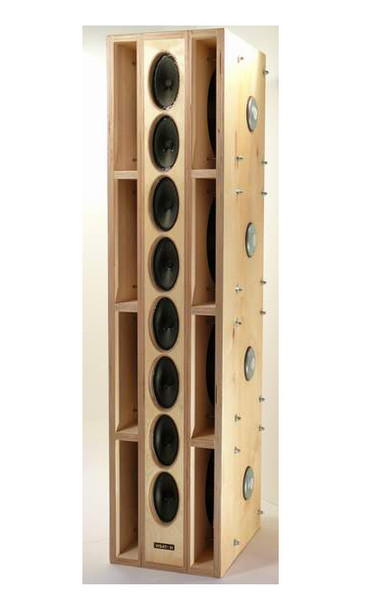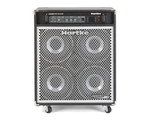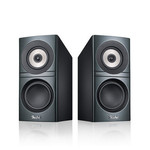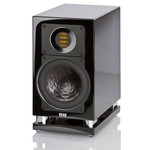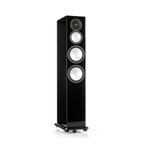目錄的
-
目錄的
- Antiquitäten & Kunst
- Auto & Motorrad: Fahrzeuge
- Baby
- Bücher
- Camping & Outdoor
- Feinschmecker
- Garten & Terrasse
- Haushalt & Wohnen
- Haustierbedarf
- Heimwerken & Garten
- IT和电子
- Kleidung & Accessoires
- Modellbau
- Musik
- PC- & Videospiele
- Sammeln & Seltenes
- Spielzeug
- TV, Video, DVD
- Telekommunikation
- Uhren & Schmuck
- Wellness & Beauty
- fashion & lifestyle
- institutional food services equipment
- medical equipment, accessories & supplies
- 个人护理
- 休闲爱好
- 办公设备,用品和配件
- 商业与工业
- 家居,建筑,装修
- 家用电器
- 摩托车及配件
- 武器和弹药
- 照相机
- 花园和庭院
- 运动,娱乐及休闲
- 食物
- 高保真音響
Filters
Search
Visaton GRAND ORGUE
凡购买和价格 (Advertising *)
顶部
技术特点
顶部
音频
| 峰值音乐输出功率(PMPO) | 500 W |
|---|---|
| 灵敏度 | 81 dB |
| 频率范围 | 16 - 28000 Hz |
| 阻抗 | 4 Ω |
扬声器
| 驱动程序数量 | 8 |
|---|---|
| 推荐使用 | Universal |
性能
| 均衡器 | N |
|---|
另外
| 连接方式 | Wired |
|---|
200 W, 4 Ohm, 16–28000 Hz, White
The toughest challenge for a high-end loudspeaker is to reproduce the lowest frequencies of larger instruments, such as an organ or double bass, with appropriate fidelity. Only very few speakers are at all able to reproduce the lowest register of a church organ and even then only the very best are able to make it sound as if it was coming from an organ pipe. To do credit to a double bass in all its glory without sounding fluffy or over-inflated or, even worse, giving up altogether, is the reserve of very few, outstanding loudspeaker constructions. The "Les Orgues" speaker series, in this case the GRAND ORGUE species, represent exactly that capability. With eight WS 25 E - 8 Ohm woofers, optimised specifically as a free-air system, mounted in a folded, but open baffle, they are able to reproduce bass down to below 20 Hz in a most natural, unhurried and completely unexaggerated manner and with no sign of weakness. Since there is, in effect, no enclosure, the resonant frequency of the woofer is not increased, but in this case even decreased, which enables it to emanate clear, non-compressed extremely low frequencies. The precondition for this low-range bass imaging, which uses double-sided radiation, is, however, also to ensure the speakers are far enough away from the wall. One metre is sufficient, but for full power right to the bottom of the bass range, 2 - 3 metres is preferable.
But the effortless and unobtrusive deep bass is not all, by any means. The bass section, which radiates to both sides, is supplemented by a line array consisting of eight oval SL 713 - 4 Ohm full-range drivers. This moderately priced full-range loudspeaker is characterised by its extremely light paper diaphragm and the voice coil carrier made of kraft paper which, together, ensure absolutely natural sound right through to the highest frequencies.
A key characteristic of line arrays is that they generate a highly focused sound beam in the vertical plane. Outside that main path, a large proportion of the signal is cancelled out by interference. This prevents reflections from the floor and ceiling from even coming into existence, which would impair the precise tridimensional imaging of the music. However this beaming effect is a direct function of the wavelength of the sound radiated. The higher the frequency, and, as a result, the shorter the wavelength, the more extreme the beaming effect. A large array such as we have here in the GRAND ORGUE would normally lead to very extreme beaming in the high-frequency range, which would not reflect the reality of the sound being played. To achieve as uniform a beaming effect as possible across the entire frequency range, which is important to guarantee balanced sound quality in the listening room, we have arranged for a correcting circuit within the array. This circuit ensures that, as the frequency increases, additional output is directed towards the second and third full-range drivers from the top while the output to the other six drivers is gradually reduced. In effect, the array is shortened across the full range steplessly from eight loudspeakers to two. These two loudspeakers should be as close as possible to ear height. If ear height should actually be higher or lower than the midpoint between the second and third full-range drivers from the top, the system can easily be adapted to the situation by wiring up the array in such a way that e.g. the third and fourth drivers from the top are responsible for the higher frequencies. In this way, the cabinet can be tuned in small steps to suit the real situation.
Combining all these technical sophistications in a single cabinet results in an exceptional speaker system which is predestined for the "natural" reproduction of music, but not only for that. Whether it is a keenly picked guitar string, a crisp drum solo, an entire symphony orchestra including an uplifting, heart-warming string section and a powerful brass department, or the veritable queen of all instruments, the organ, it will all come across absolutely authentically, with dynamism and is guaranteed to give you goose pimples. In the same way, voices, male and female, are reproduced faithfully including every tiny detail. Each instrument and voice appear to be hovering in exactly the right place in space, the spatial quality is completely natural and everything is in the defined position.
Anyone on the lookout for loudspeakers for high-quality music, who does not intend to make compromises in terms of frequency response and who is keen on extremely accurate imaging of the stage or orchestra pit, should take a close look at the GRAND ORGUE. The only preconditions are a powerful amplifier and generous distances between the cabinets and the walls to enable the GRAND ORGUE to develop its capabilities.
HINT: The bass part of the GRAND ORGUE, on its own without the full-range drivers, connected directly up to an active source without a passive crossover, acts as an excellent subwoofer and can be used, either singly or as a pair, to support music-orientated high-end loudspeakers and full-range loudspeakers down to the lowest bass frequencies and give home theatres the bottom end that they deserve.
But the effortless and unobtrusive deep bass is not all, by any means. The bass section, which radiates to both sides, is supplemented by a line array consisting of eight oval SL 713 - 4 Ohm full-range drivers. This moderately priced full-range loudspeaker is characterised by its extremely light paper diaphragm and the voice coil carrier made of kraft paper which, together, ensure absolutely natural sound right through to the highest frequencies.
A key characteristic of line arrays is that they generate a highly focused sound beam in the vertical plane. Outside that main path, a large proportion of the signal is cancelled out by interference. This prevents reflections from the floor and ceiling from even coming into existence, which would impair the precise tridimensional imaging of the music. However this beaming effect is a direct function of the wavelength of the sound radiated. The higher the frequency, and, as a result, the shorter the wavelength, the more extreme the beaming effect. A large array such as we have here in the GRAND ORGUE would normally lead to very extreme beaming in the high-frequency range, which would not reflect the reality of the sound being played. To achieve as uniform a beaming effect as possible across the entire frequency range, which is important to guarantee balanced sound quality in the listening room, we have arranged for a correcting circuit within the array. This circuit ensures that, as the frequency increases, additional output is directed towards the second and third full-range drivers from the top while the output to the other six drivers is gradually reduced. In effect, the array is shortened across the full range steplessly from eight loudspeakers to two. These two loudspeakers should be as close as possible to ear height. If ear height should actually be higher or lower than the midpoint between the second and third full-range drivers from the top, the system can easily be adapted to the situation by wiring up the array in such a way that e.g. the third and fourth drivers from the top are responsible for the higher frequencies. In this way, the cabinet can be tuned in small steps to suit the real situation.
Combining all these technical sophistications in a single cabinet results in an exceptional speaker system which is predestined for the "natural" reproduction of music, but not only for that. Whether it is a keenly picked guitar string, a crisp drum solo, an entire symphony orchestra including an uplifting, heart-warming string section and a powerful brass department, or the veritable queen of all instruments, the organ, it will all come across absolutely authentically, with dynamism and is guaranteed to give you goose pimples. In the same way, voices, male and female, are reproduced faithfully including every tiny detail. Each instrument and voice appear to be hovering in exactly the right place in space, the spatial quality is completely natural and everything is in the defined position.
Anyone on the lookout for loudspeakers for high-quality music, who does not intend to make compromises in terms of frequency response and who is keen on extremely accurate imaging of the stage or orchestra pit, should take a close look at the GRAND ORGUE. The only preconditions are a powerful amplifier and generous distances between the cabinets and the walls to enable the GRAND ORGUE to develop its capabilities.
HINT: The bass part of the GRAND ORGUE, on its own without the full-range drivers, connected directly up to an active source without a passive crossover, acts as an excellent subwoofer and can be used, either singly or as a pair, to support music-orientated high-end loudspeakers and full-range loudspeakers down to the lowest bass frequencies and give home theatres the bottom end that they deserve.
類似的優惠
顶部
-
支付方式
我们接受:



